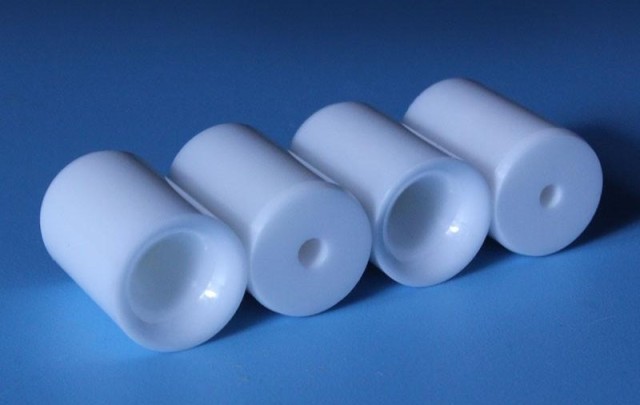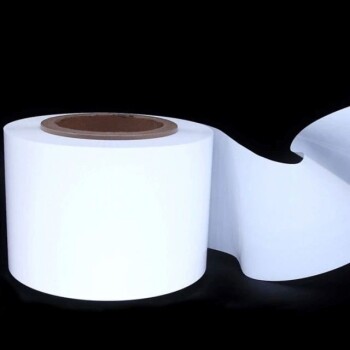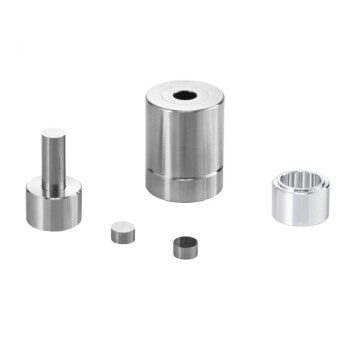Introduction to Production Processes
Dry Pressing Process
Dry pressing is a method used to form zirconia ceramic rods by applying pressure directly to the ceramic powder. This process involves compacting the powder into a mold under controlled conditions to achieve the desired shape and density. Unlike wet bag pressing, which involves a flexible membrane isolating the pressure fluid from the mold, dry pressing operates without such a membrane, making it a more straightforward and cleaner process.
The absence of a flexible membrane in dry pressing means that the pressure is applied directly to the ceramic powder, which simplifies the setup and reduces the risk of contamination. This direct application of pressure allows for rapid cycles, making dry pressing particularly suitable for automated mass production. The cleanliness and efficiency of this method are further enhanced by the reduced need for cleaning the pressure vessel, as the mold remains free from contamination by wet powder.
In summary, dry pressing stands out for its simplicity, cleanliness, and efficiency, making it an ideal choice for high-volume production of zirconia ceramic rods.
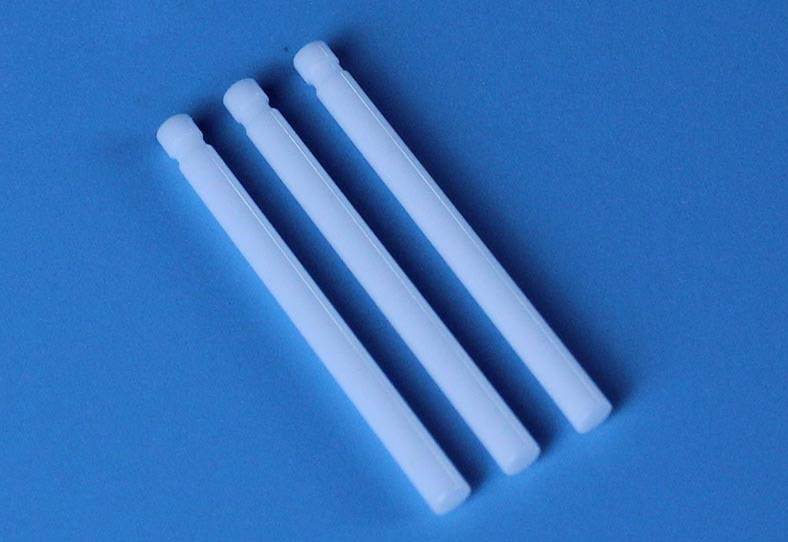
Isostatic Pressing Process
Isostatic pressing is a sophisticated molding technique that employs a high-pressure vacuum isostatic press. This process involves placing the product within a closed container filled with a liquid medium. The key to this method lies in the application of equal pressure to all surfaces of the product, which significantly enhances its density under high pressure. This uniform compression results in the product attaining the required shape and form.
The isostatic pressing process has evolved with advancements in technology, finding extensive applications in the formation of various materials. These include high-temperature refractory materials, ceramics, cemented carbides, lanthanon permanent magnets, carbon materials, and rare metal powders. The versatility of isostatic pressing is evident in its ability to mold complex shapes and achieve high densities, making it indispensable in several industrial sectors.
| Material Type | Application in Isostatic Pressing |
|---|---|
| High-temperature Refractory | Forming complex shapes under high pressure |
| Ceramics | Achieving high density and uniform structure |
| Cemented Carbide | Enhancing material strength and durability |
| Lanthanon Permanent Magnet | Producing precise and uniform magnetic properties |
| Carbon Materials | Forming intricate structures with high density |
| Rare Metal Powders | Ensuring uniform compression and high density |
The isostatic pressing process not only ensures uniform compression but also allows for the creation of intricate patterns, such as the distinctive dovetail pattern seen on ceramic rods. This capability underscores the process's superiority in producing high-quality, precise, and durable products, setting it apart from other molding methods like dry pressing.
Differences and Characteristics
Backing Pattern Structure
The primary distinction between isostatic pressing and dry pressing in zirconia ceramic rod production is evident in their backing pattern structures. Isostatic pressing excels in creating intricate and unique patterns that are not achievable through dry pressing. One notable example is the dovetail pattern, which is meticulously crafted on ceramic rods. This pattern is a testament to the precision and versatility of isostatic pressing, allowing for the formation of complex geometries that enhance the functionality and aesthetic appeal of the final product.
In contrast, dry pressing, while efficient for producing standard shapes, lacks the capability to replicate such detailed patterns. The dovetail pattern, for instance, requires uniform pressure distribution and controlled compression, which are hallmarks of isostatic pressing. This method ensures that the ceramic material is uniformly compressed from all sides, resulting in a dense and homogenous structure that supports the intricate design.
The ability to produce such unique patterns not only distinguishes isostatic pressing but also underscores its superiority in applications where precision and detail are paramount. This capability extends beyond mere aesthetics, contributing to the overall performance and durability of the zirconia ceramic rods.
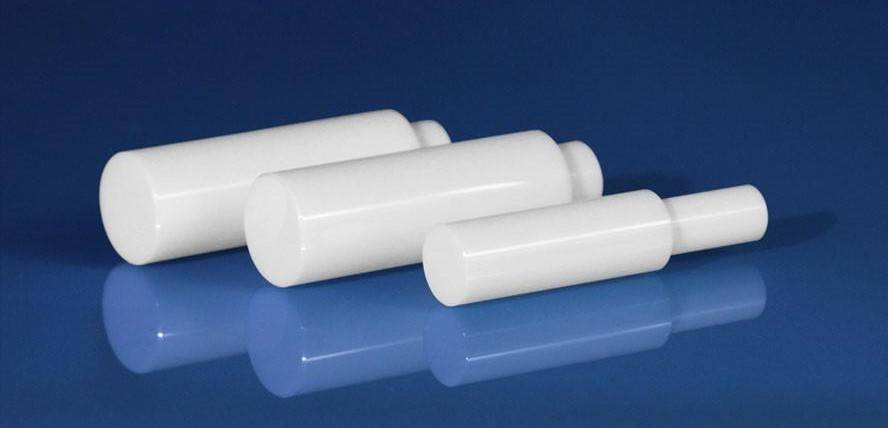
Material Requirements
Isostatic pressing imposes stringent requirements on the zirconia ceramic green body, necessitating specific properties to ensure optimal performance during the pressing process. The green body must exhibit sufficient dry strength to maintain its structural integrity under the high-pressure conditions of isostatic pressing. This strength ensures that the ceramic material does not fracture or crumble, allowing for the formation of a uniform and dense final product.
In addition to dry strength, the green body must possess adequate plasticity. This property allows the ceramic material to deform under pressure without breaking, facilitating the molding process and enabling the creation of intricate shapes and patterns. Plasticity is particularly crucial in achieving the unique backing patterns, such as the dovetail pattern on ceramic rods, which are characteristic of isostatic pressing.
Another critical requirement is the water absorption of the green body. The ability to absorb and retain water ensures that the ceramic material remains malleable and can be shaped effectively during the pressing process. Proper water absorption levels help in achieving the desired density and homogeneity in the final zirconia ceramic rod.
To summarize, the zirconia ceramic green body subjected to isostatic pressing must meet specific criteria:
- Dry Strength: Ensures structural integrity under high pressure.
- Plasticity: Facilitates deformation without breaking, enabling intricate shapes.
- Water Absorption: Maintains malleability and aids in achieving uniform density.
These requirements collectively contribute to the superior quality and performance of zirconia ceramic rods produced through isostatic pressing.
Advantages and Limitations
Advantages of Isostatic Pressing
Isostatic pressing offers several distinct advantages over other ceramic production methods, particularly in the creation of zirconia ceramic rods. One of the most notable benefits is the uniform density achieved through this process. Unlike traditional pressing methods that apply pressure unidirectionally, isostatic pressing compresses the material from all directions simultaneously. This omnidirectional pressure ensures that the powder is compacted evenly, resulting in a high and uniform density without the need for lubricants.
The process also significantly enhances the material's properties, leading to zirconia ceramic rods with superior hardness and toughness. This is particularly advantageous for materials that are difficult to compact, such as superalloys, titanium, tool steels, stainless steel, and beryllium. The efficiency of material utilization in isostatic pressing is another key benefit, as it minimizes waste and reduces the overall cost of production.
Moreover, isostatic pressing removes many of the geometric constraints associated with unidirectional pressing. This flexibility allows for the creation of more complex and intricate shapes, which can be tailored to specific applications. For instance, the unique backing pattern structure produced by isostatic pressing, such as the dovetail pattern on ceramic rods, is a testament to its versatility and precision.
In summary, the advantages of isostatic pressing in zirconia ceramic rod production include uniform density, enhanced material properties, efficient material utilization, and the ability to produce complex shapes, all contributing to the superior hardness and toughness of the final product.
Advantages of Dry Pressing
Dry pressing offers several distinct advantages in the production of zirconia ceramic rods, chief among them being its faster production speed. This method allows for rapid compaction of the ceramic powder, significantly reducing the time required to form the rods compared to other techniques such as isostatic pressing.
Moreover, dry pressing does not require the use of lubricants, which can complicate the production process and potentially affect the final product's properties. The simplicity of the dry pressing process contributes to its efficiency, making it a preferred choice for manufacturers who prioritize speed and ease of operation.

In contrast to isostatic pressing, which involves applying pressure from all directions and can be more complex and time-consuming, dry pressing's straightforward approach ensures that the production process remains streamlined and cost-effective. This efficiency is particularly beneficial for large-scale production environments where quick turnaround times are critical.
Additionally, dry pressing is applicable to a wide range of materials, including difficult-to-compact and expensive materials such as superalloys and titanium. The process's versatility ensures that it can be adapted to various production needs, making it a flexible option in the ceramic manufacturing industry.
| Advantage | Description |
|---|---|
| Faster Production Speed | Rapid compaction of ceramic powder, reducing production time. |
| No Lubricant Required | Simplifies the process and avoids potential issues with product properties. |
| Efficient and Cost-Effective | Streamlined operation suitable for large-scale production. |
| Versatile Material Use | Applicable to a wide range of materials, including difficult-to-compact alloys. |
Current Bottlenecks
The primary constraint of isostatic pressing technology lies in its production capacity and performance. Unlike dry pressing, which can achieve faster production speeds, isostatic pressing faces challenges in scaling up due to the intricate nature of the process. The high-pressure vacuum environment required for isostatic pressing necessitates specialized equipment and meticulous control, which can limit throughput.
Moreover, the performance of isostatic pressing is often tied to the quality of the zirconia ceramic green body. Specific requirements such as dry strength, plasticity, and water absorption must be meticulously maintained, adding another layer of complexity to the production process. This precision, while beneficial for producing high-quality zirconia ceramic rods with superior hardness and toughness, can also be a bottleneck when it comes to achieving consistent and large-scale production.
In summary, while isostatic pressing excels in producing high-quality zirconia ceramic rods, its current limitations in production capacity and performance necessitate ongoing research and development to overcome these challenges and fully leverage its potential.
Related Products
- Isostatic Molding Pressing Molds for Lab
- Cold Isostatic Pressing Machine CIP for Small Workpiece Production 400Mpa
- Warm Isostatic Press for Solid State Battery Research
- Warm Isostatic Press WIP Workstation 300Mpa for High Pressure Applications
- Lab Infrared Press Mold
Related Articles
- Comprehensive Guide to Isostatic Pressing: Types, Processes, and Features(3)
- Understanding Isostatic Pressing: Process, Benefits, Limitations, and Applications
- Isostatic Pressing Technology: Principles, Classification, and Applications
- The Benefits of Using Isostatic Pressing in Manufacturing
- Understanding the Isostatic Pressing Process and its Types
